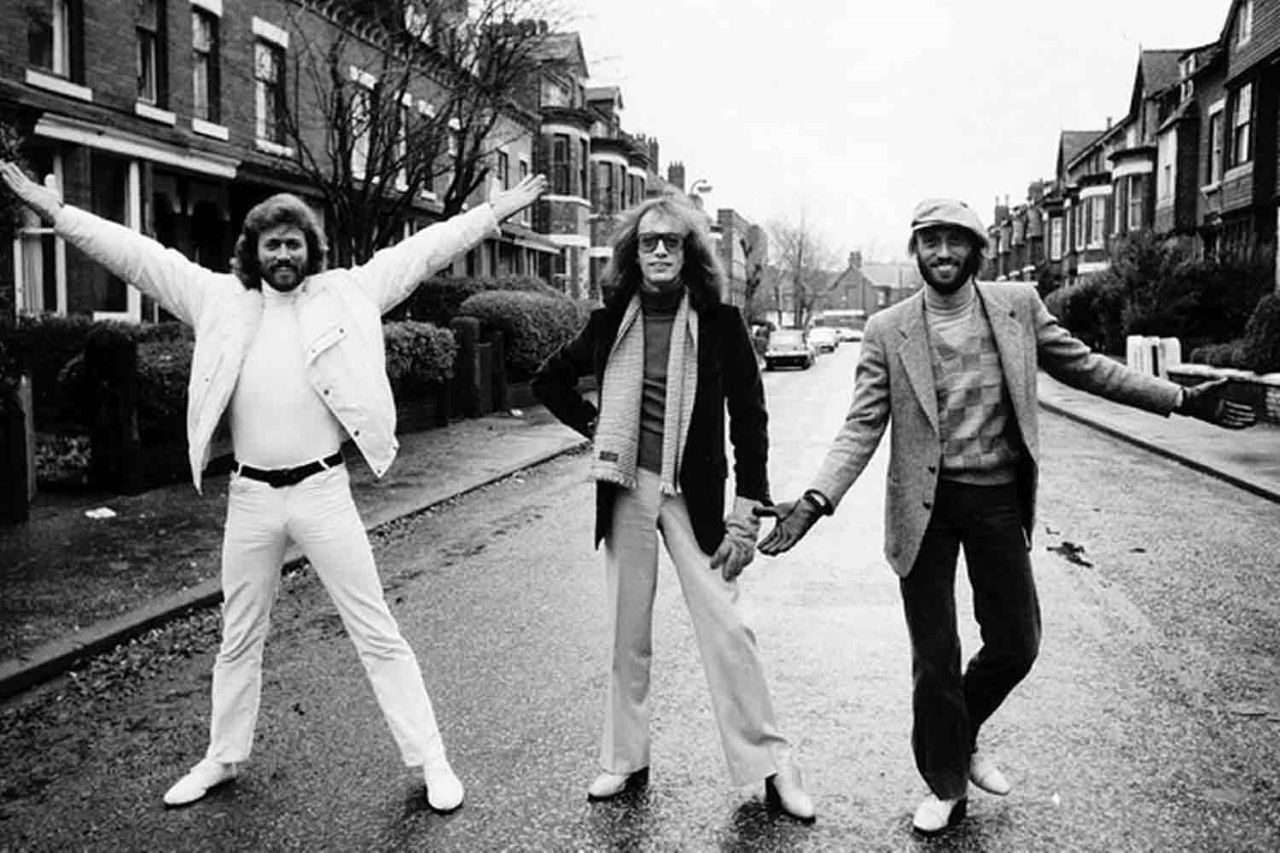A Happy Accident in Miami
In the early 1970s, the Bee Gees were at a crossroads. Their lush ballads and orchestral pop were falling out of fashion, and they needed a fresh identity. Then, during a rehearsal session in Miami for their 1975 album Main Course, something unexpected happened.
Barry Gibb, known for his smooth baritone, sang a line in a playful falsetto — a high-pitched “false voice” usually reserved for background harmonies or stylistic flourishes. Producer Arif Mardin’s ears perked up. He immediately recognized something different: the falsetto wasn’t just a gimmick — it was rich, powerful, and emotional.
This moment would change the course of the Bee Gees’ career.

From Experiment to Trademark
Their first major test of this new sound came with “Nights on Broadway”. Mardin pushed Barry to use falsetto not just for harmony, but as the lead. The result was electric — sleek, sensual, and perfectly in step with the growing disco movement.
Then came “Jive Talkin’”, a funk-infused single that hit No. 1 in the U.S. The falsetto wasn’t dominant yet, but it was creeping forward, weaving into the group’s evolving sound.
By the time “You Should Be Dancing” hit the airwaves in 1976, the transformation was complete. Barry’s falsetto was front and center — urgent, rhythmic, and utterly infectious.
Saturday Night Fever – Falsetto Goes Global
When the Bee Gees were asked to write songs for Saturday Night Fever in 1977, Barry leaned fully into his falsetto. Tracks like “Stayin’ Alive”, “Night Fever”, and “More Than a Woman” were driven by his piercing, emotive high notes.
The falsetto became inseparable from the Bee Gees’ identity. It wasn’t just a vocal choice — it was a brand. The sound cut through crowded disco mixes, commanding attention on the dance floor. DJs knew instantly when a Bee Gees song came on, even before the first lyric.
Why It Worked
Barry’s falsetto stood out for several reasons:
-
Power and Control – Unlike many falsettos, his wasn’t breathy or weak. It had body and projection, making it sound confident rather than fragile.
-
Emotional Range – He could shift from seductive whispers to urgent cries within the same song.
-
Blend with Harmonies – Barry’s falsetto sat on top of Robin’s quivering vibrato and Maurice’s steady baritone, creating a layered sound that was instantly recognizable.
Influence on Other Artists
The Bee Gees’ falsetto-heavy disco era inspired countless artists across genres.
-
Prince – Used falsetto as a core element of his funk-pop identity in songs like “Kiss”.
-
Michael Jackson – Integrated falsetto flourishes throughout his disco and pop work, especially in “Don’t Stop ‘Til You Get Enough”.
-
Bruno Mars – Modern hits like “Treasure” and “Versace on the Floor” nod to Barry’s falsetto style.
-
Justin Timberlake – Built much of his solo career around falsetto-driven R&B, citing Bee Gees as an influence.
Even in rock, bands like The Killers (“The Man”) and Franz Ferdinand have flirted with falsetto in homage to the disco and funk era.
Breaking the Stigma
Before Barry, falsetto in pop music was often seen as a novelty or a background texture. He normalized it as a lead voice in mainstream hits — especially for male singers in an era dominated by deep, masculine tones.
By showing that falsetto could be powerful, masculine, and emotionally resonant, Barry opened the door for a more diverse range of male vocal expressions in popular music.
The Legacy Today
Even decades later, the falsetto remains tied to the Bee Gees’ global identity. Whether in film soundtracks, commercials, or TikTok remixes, Barry’s soaring high notes instantly transport listeners back to the glittering lights of the disco floor.
His falsetto wasn’t just a sound — it was a reinvention, a lifeline for the group when they were on the brink, and a gift to pop music that still echoes in the voices of today’s stars.